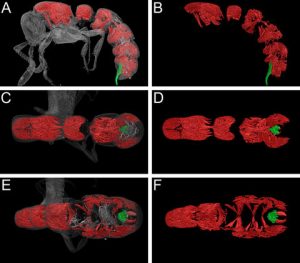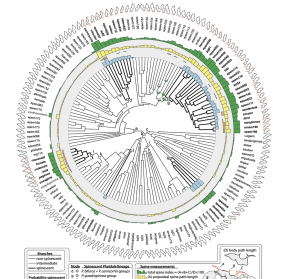At every OKEON site there is a small green box attached to a tree. These boxes are acoustic monitors, and they are recording natural sounds almost constantly. As part of the OKEON project, we use these natural sound recordings, or “soundscapes”, as a way of monitoring biodiversity.

Sam Ross sets up an acoustic monitoring device at the OIST field site.
We collect more than 1 terabyte of audio data every week. If you wanted to listen to all of the recordings we’ve made so far, it would take you about 8 years… if you listened all day and never went to sleep. To sort through all this audio data, we use two approaches. First, we break the sounds up into sounds at different frequencies (i.e., pitch). This lets us get a big picture view of when and where animals are active on Okinawa. Second, we use machine learning to train our computers to detect species in which we are interested. This helps us understand more about which particular species are in each area of the island, and how their behavior varies across the year.

In many parts of Okinawa, humans and nature live close together. Managing this interaction is important for preserving wild populations of plants and animals.
Ultimately, our project aims to understand the ways that human activity affects Okinawa’s wildlife, and how we can better protect these species in the future. For more information (including videos), please see the OIST press release. A link to the study can be found here.








